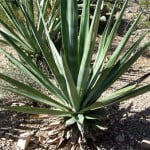 Climate is long term aggregated conditions of weather elements prevailing in a particular region over a specified period of time. Unfortunately, man has accelerated the degradation and over-exploitation of natural-resources due to which the global climate is fluctuating at an alarming rate. Ever rising population is adding a lot of problems offering the ease to changing climate. Deforestation, industrialization, urbanization and release of green house gases have changed the temperature of the universe. These changes are offering a deviation in cropping patterns, farming systems, pests, diseases and weeds of agricultural systems. The cropping-systems have been changed due to geographic range transformations among dangerous endemic weeds species and newly adapted invasive weeds. The emerging exotic weed flora is a big challenge towards weed management. Climatologists and agronomists must consider this problem and work for the solution. Weeds have developed new features according to the changing environment and have adapted well in prevailing conditions. Many ecotypes of weeds are offering a great problem in crop production and weed management as they are resistant to herbicides and weed control practices.
Climate is long term aggregated conditions of weather elements prevailing in a particular region over a specified period of time. Unfortunately, man has accelerated the degradation and over-exploitation of natural-resources due to which the global climate is fluctuating at an alarming rate. Ever rising population is adding a lot of problems offering the ease to changing climate. Deforestation, industrialization, urbanization and release of green house gases have changed the temperature of the universe. These changes are offering a deviation in cropping patterns, farming systems, pests, diseases and weeds of agricultural systems. The cropping-systems have been changed due to geographic range transformations among dangerous endemic weeds species and newly adapted invasive weeds. The emerging exotic weed flora is a big challenge towards weed management. Climatologists and agronomists must consider this problem and work for the solution. Weeds have developed new features according to the changing environment and have adapted well in prevailing conditions. Many ecotypes of weeds are offering a great problem in crop production and weed management as they are resistant to herbicides and weed control practices.Scientists have worked on the distribution of weeds in changing climatic conditions. There are many weeds that will become more vigorous and dominant in near future while there are many more which will become extinct. For instance, slender foxtail and wild oat will show a very little change up-to 2050 especially in Europe. It depicts that the existing ability of weeds is changing day by day which will affect the potential productivity of arable crops. The elevated CO2 levels due to increased global warming are causing carbon fertilization effect but increasing water use efficiency up to some extent. This factor is influencing the weed competition ability but the effect is not much pronounced and clear. On the other hand the climate-change along with high CO2 levels is influencing the floristic composition and vision of weed species by promoting biodiversity. Diurnal temperature fluctuations are very effective in terms of weeds growth. It is a big concern for crop production in a conservation tillage system and a lot of work has to be done on this particular line of action.
A report by the Intergovernmental Panel on Climate Change (IPCC) in 2007 had shown the impact of climate-change on weed species distribution, weed germination, weed crop competition, weed seed bank dynamics and eco physiological traits. Modifications and adaptations in weeds whether those are behavioral or structural have made them capable of being persistent under harsh conditions. It is posing difficulty towards their control and management. By the end of the century, many weed species and weed niche will alter and the distribution patterns will change in wider ranges. We have to re-establish our cropping-systems, rotations, agricultural practices and most importantly weed management protocols and techniques to achieve higher yields and for the sustainability of agricultural systems.
The writer is associated with the Department of Agronomy, University of Agriculture, Faisalabad.







